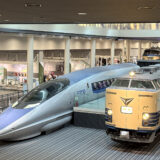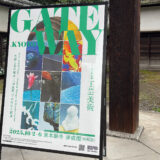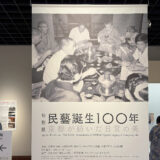What is Ogura Hyakunin Isshu?
Ogura Hyakunin Isshu is a collection of waka (Japanese poems) compiled by Fujiwara no Teika (1162–1241). It occupies a particularly important position in the history of Japanese literature. This collection spans about 600 years and includes one poem each by 100 famous Japanese poets from the Asuka period to the Kamakura period. It is called the Ogura Hyakunin Isshu because Fujiwara no Sadaie compiled it at his villa on Mount Ogura in the Arashiyama area of Kyoto.
The Hyakunin Isshu was often quoted in later literary works and used as a theme for Kabuki and Noh plays. Its aesthetic sensibilities are also reflected in the poetic expression of Japanese gardens and the spirit of the tea ceremony, and it has had an impact on Japanese culture as a whole. Furthermore, the nature and sense of the seasons depicted in the Hyakunin Isshu waka poems have also influenced Japanese art and craftwork design. For example, the motifs of flowers, birds, wind, and moon that appear in the waka poems are frequently incorporated into the decoration of folding screens, ceramics, textiles, and other items. As a result, the spirit of the Hyakunin Isshu can be said to live on deeply within the visual arts.
Waka poetry has long been loved in traditional Japanese culture as an art form that expresses nature and people’s emotions in short words. Hyakunin Isshu is a collection of famous poems that later influenced Japanese literature and art. Since the Edo period, Hyakunin Isshu has been used as a literary work in various educational and entertainment contexts.
Hyakunin Isshu Karuta

In addition to enjoying the content of the waka poems, Hyakunin Isshu is also deeply rooted in Japanese culture as a karuta game. In this game, when the first half of a poem is read out, players must quickly grab the card with the second half of the poem written on it. It is widely enjoyed at traditional Japanese events, such as family and school events held during the New Year.
In addition, karuta cards themselves are sometimes made as works of art, and special karuta cards with gorgeous maki-e lacquer work or elaborate paintings are highly valued as such. These artistic karuta cards are highly regarded as examples of the high level of craftsmanship in Japan from the Edo period to the present.

Nintendo is known as the manufacturer of Hyakunin Isshu karuta cards. Today, Nintendo is a world-famous video game company, but it was founded in Kyoto in 1889 as a company that manufactured hanafuda and karuta. Since then, Nintendo has achieved great success in home video game consoles and digital entertainment and has established itself as a pioneer in combining traditional Japanese games with modern technology. Looking back on its history, we can see the huge impact that Nintendo has had on both Japanese culture and modern entertainment.

Now, the Marufukuro Hotel

About competitive karuta
Hyakunin Isshu karuta has evolved not only as a game but also as a competitive sport. Competitive karuta requires memory, quick thinking, concentration, and a sporting element. The number of people playing competitive karuta is not limited to Japan, and it is becoming increasingly popular overseas.
In particular, the 2016 movie “Chihayafuru” series has helped to draw attention to Hyakunin Isshu and competitive karuta among young people. The film has also increased the number of foreigners interested in competitive karuta, and karuta tournaments are now being held in places such as the United States and Europe. To support the international expansion of competitive karuta, workshops have begun to be held overseas where people can learn the rules and techniques, and videos of people playing karuta are being shared worldwide via YouTube and social networking sites. For example, in the United States, activities are being held where students studying Japanese can deepen their understanding of Japanese culture through the Hyakunin Isshu, and competitive karuta clubs are being formed at universities and in local communities.
Introduction to the Saga Arashiyama Bunkakan
The Saga Arashiyama Bunkakan in Arashiyama, Kyoto, is a facility that displays materials related to Ogura Hyakunin Isshu. At the Bunkakan, you can learn about the background of the Hyakunin Isshu waka poems and the lives of the poets. There is also an area in the museum where you can experience playing karuta, providing a great opportunity to familiarize yourself with the world of Hyakunin Isshu.
The Saga Arashiyama Bunkakan is a valuable place for learning about Japanese aesthetics and literature and is also a recommended spot for foreign tourists visiting Japan. The museum has a wealth of exhibits that teach the background and history of the Hyakunin Isshu waka poems, and English explanations are also available. In addition, the karuta demonstrations and hands-on corner provide a lively opportunity to experience Japanese culture, as you can try picking up the cards. Why not enjoy a moment of immersion in the world of Hyakunin Isshu, together with the rich natural scenery of Arashiyama?
Hyakunin Isshu is a symbol of traditional Japanese culture and aesthetics. Its profound world will help you better understand Japan’s appeal. Hyakunin Isshu is also used in educational settings as a teaching tool to deepen familiarity with classical literature through waka poetry. Furthermore, it plays an important role in Japanese cultural customs, such as being played during New Year’s events and family gatherings in everyday life.




